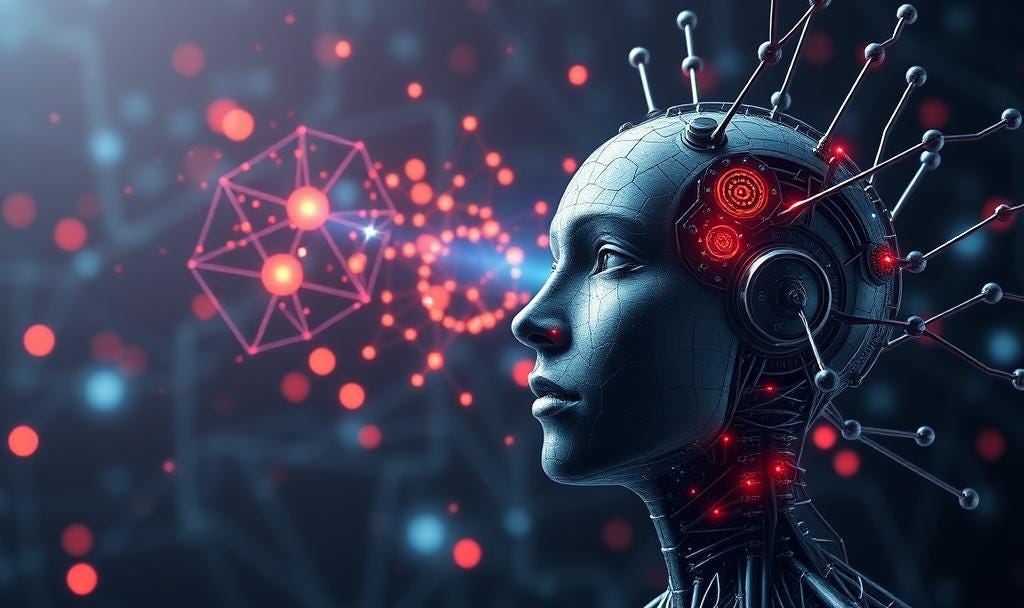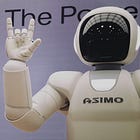There are moments in history when the axis of human understanding tilts just enough to change the course of civilization. The printing press. The microscope. The transistor. And now, the emergence of scientific superintelligence—the culmination of the converging FABRIC technologies: Fusion, Artificial Intelligence, Biotechnology, Robotics, and Innovative Computing.
For centuries, science has been the slowest part of progress. Not because of a lack of tools, but because of the bandwidth of thought. We’ve been limited by the speed at which humans can hypothesize, experiment, and interpret. Even as our instruments have become more precise, our collective reasoning has remained bounded by the cognitive bottleneck of the human mind. But the 21st century—accelerated by the twin engines of biotechnology and artificial intelligence, and now reinforced by the entire FABRIC stack—is rewriting that story.
The podcast audio was AI-generated using Google’s NotebookLM.
In 2012, two scientific events quietly redefined the possibilities of life and intelligence. Jennifer Doudna and Emmanuelle Charpentier published the now-famous CRISPR paper, showing that a simple bacterial immune system could become a universal gene-editing tool. That same year, a deep learning architecture called AlexNet shattered decades of stagnation in computer vision by teaching a machine to see with superhuman precision. These two breakthroughs—one biological, one computational—ignited revolutions that would ultimately converge. CRISPR gave us the ability to edit the code of life. AlexNet gave us the ability to teach machines to learn from the world. Together, they set the stage for a new epoch: a world where evolution itself becomes an engineered process, and discovery becomes a computable one.
A decade later, in 2022, that convergence took on linguistic form. When OpenAI released ChatGPT-3, the public met an AI system that didn’t just process data—it reasoned, synthesized, and conversed. It was the first time that the invisible machinery of deep learning felt human-adjacent, even if imperfectly so. It marked the beginning of an era where artificial intelligence could participate in the generative act of thought itself. But what happens when that reasoning power, now applied to words, is turned toward the practice of science? What happens when the scientific method itself—hypothesis, experiment, analysis, iteration—becomes not just assisted by computation, but executed by it?
That question defines the next decade. And the answer is the birth of scientific superintelligence—a distributed architecture where the FABRIC of progress fuses into one coherent system of discovery.
The FABRIC of Discovery
The future of science is being woven from five threads: Fusion, AI, Biotech, Robotics, and Innovative Computing. Each is transformative on its own. Together, they form the infrastructure of a new epistemology.
Fusion represents the energy substrate—the ability to power our ambitions indefinitely. It’s not just about clean energy; it’s about enabling limitless experimentation. When computation and experimentation are no longer resource-bound, science becomes a perpetual motion machine.
AI provides the reasoning substrate—the ability to generate and test hypotheses at scale. It moves us from data analysis to knowledge synthesis, from automation to cognition.
Biotechnology is the substrate of life itself—the medium through which the principles of learning and evolution are physically realized. Synthetic biology, cell-free systems, and programmable genomes turn life into a computational domain.
Robotics brings embodiment to science—hands that execute, instruments that perceive, and autonomous labs that close the loop between idea and result. They make scientific iteration continuous and scalable.
Innovative Computing—from quantum to neuromorphic systems—provides the architecture for complexity. It enables reasoning across hierarchies of matter, energy, and information, accelerating discovery beyond the limits of classical computation.
When woven together, these technologies form a self-reinforcing feedback loop of discovery. Fusion powers computation. Computation guides biology. Biology informs robotics. Robotics accelerates experimentation. And the entire system learns from itself. This is not incremental progress—it’s recursive progress. A civilization-scale experiment in teaching the universe to understand itself.
The Bottleneck of Discovery
The history of science is a history of bottlenecks. The telescope expanded our observation. The printing press expanded our communication. The computer expanded our calculation. But the act of discovery—the process by which we generate, test, and refine ideas about reality—has remained stubbornly analog. It’s still a craft, dependent on the intuition of the few and the slow accumulation of the many.
The modern scientific method, formalized during the Enlightenment, has served us well. It taught us to build knowledge through falsification, replication, and peer review. But it also introduced latency. Each hypothesis requires months—or years—of design, funding, experimentation, and publication. Each insight is mediated by human bias, institutional inertia, and the physics of paper. In the 20th century, this model worked because the world changed linearly. In the 21st, it no longer does.
We now live in an exponential century. Data doubles faster than our ability to interpret it. Biological and physical systems are too complex for human reasoning alone. The problem isn’t that science is wrong—it’s that it’s too slow. And in the face of pandemics, climate tipping points, and the rapid fusion of intelligence and matter, slow science is a form of existential risk.
That’s why the paradigm shift now underway isn’t just about new technologies—it’s about a new architecture for knowledge itself.
From Tools to Teammates
Scientific superintelligence isn’t an algorithm. It’s an ecosystem. It’s the convergence of the FABRIC stack—automated experimentation, large-scale reasoning, self-improving models, and human collaboration loops. It’s the transition from science done by humans with tools to science done by systems with humans.
The early precursors already exist. Self-driving labs at places like Carnegie Mellon and AstraZeneca now design, execute, and optimize experiments faster than any research team could. Foundation models are learning chemistry and protein folding from first principles. Multimodal AI systems can read the literature, generate hypotheses, design experiments, and interpret results. What we’re witnessing is the emergence of the first AI Scientists—machines capable of reasoning about the unknown.
In 2021, Hiroaki Kitano published the Nobel Turing Challenge manifesto, proposing a goal audacious enough to rally a generation: to build an AI scientist capable of winning a Nobel Prize by 2050. It was more than a technical challenge; it was a philosophical one. Could we design a system capable not just of automation, but of autonomy? Could we build a machine that doesn’t just execute experiments, but understands the principles behind them?
I co-funded the first international workshop on that challenge through ONR Global while at the Pentagon, precisely because it represented the next great leap: not in computation, but in cognition. We weren’t just funding research—we were redefining what it meant to do science. The ultimate goal wasn’t to replace scientists, but to expand the frontiers of discovery beyond the limits of human attention. It was a recognition that the future of knowledge creation depends on merging human curiosity with machine capacity.
Accelerating at the Speed of Computation
If the 2010s were the decade of learning and the 2020s the decade of reasoning, the 2030s will be the decade of discovery engines. Over the next ten years, we’ll witness the birth of autonomous science systems—networks of reasoning models, robotic labs, fusion-powered computing clusters, and self-updating knowledge graphs that continuously generate, test, and refine hypotheses.
These systems will operate at the speed of computation rather than the speed of thought. They’ll ingest the totality of human knowledge—papers, data sets, code, experimental logs—and model the unexplored corners of possibility. They’ll propose new experiments, run them autonomously, and feed the results back into their reasoning architecture. Discovery will become continuous, recursive, and accelerating.
The implications are staggering. We’ll see the rise of fully integrated “closed-loop science” platforms where hypothesis generation, experimental execution, and theory formation occur simultaneously across digital and physical domains. Biology will become as programmable as software. Materials science will evolve from serendipity to search. Climate modeling will shift from simulation to synthesis. The very idea of a research project will transform—from a human-led process to a system-led evolution of understanding.
The Human in the Loop
Scientific superintelligence won’t make scientists obsolete—it will make them more essential. The new frontier of science isn’t about doing experiments; it’s about designing the systems that do them. It’s about crafting architectures of curiosity, embedding ethics into algorithms, and teaching machines what matters.
Humanity’s comparative advantage won’t be in calculation but in context. We’ll define the questions, interpret the meaning, and connect the discoveries back to values, narratives, and needs. The next Einstein might not be a person—it might be a distributed system trained on all of human science—but the next Darwin will still be human, because synthesis, empathy, and storytelling remain ours to give.
That’s why the most important scientific institutions of the next decade won’t be universities or corporations, but hybrid ecosystems—places where humans and machines co-create understanding. The scientist of 2035 will look less like a lab-coat researcher and more like an architect of intelligent discovery networks. Their experiments will happen in the cloud, their collaborators will be algorithms, and their breakthroughs will emerge from co-evolution rather than competition.
The Science of Responsible Progress
With great acceleration comes great responsibility. A world where science runs at machine speed demands new guardrails for truth, transparency, and trust. We’ll need frameworks for verifying AI-generated discoveries, standards for reproducibility across autonomous labs, and governance models that balance openness with oversight. The challenge isn’t just to go faster—it’s to go faster responsibly.
That’s why I’ve advocated for what I call the Science of Responsible Progress—a discipline that studies how to design alignment into the very fabric of our discovery systems. It integrates AI safety, bioethics, and economic modeling to ensure that the acceleration of knowledge remains in service of life, not detached from it. If we can build machines that reason about science, we can also build systems that reason about consequence.
The next revolution in science won’t come from a single lab or company—it will come from a collective realization that the scientific method itself is a technology, and like any technology, it can be upgraded. When Galileo pointed his telescope at the night sky, he didn’t just see new stars; he saw new questions. When LILA Sciences or DeepMind’s Isomorphic Labs point their AI systems at the molecular world, they won’t just discover new drugs—they’ll discover new ways of discovering.
The Frontier Ahead
We’re standing at the threshold of a new epistemology—one where knowledge itself is dynamic, adaptive, and alive. The scientific paper, that centuries-old artifact of progress, will give way to living knowledge graphs that update in real time. The lab notebook will become a cloud of autonomous experiments. The scientific community will expand to include nonhuman intelligences that don’t sleep, don’t bias, and don’t tire.
But even as the mechanics of discovery change, the essence of science remains the same: curiosity, courage, and humility before the unknown. The danger isn’t that machines will outthink us—it’s that we’ll forget why we wanted to think in the first place.
A resilient future is one where science is autonomous but aligned, accelerated but accountable, and woven through the FABRIC of progress. A future where we move not at the speed of bureaucracy, nor even at the speed of human thought, but at the speed of computation guided by the compass of purpose. That’s how we’ll unlock the next age of discovery. Not by replacing the human scientist, but by extending the reach of human imagination through the architectures we build.
The next paradigm won’t just redefine what we know. It will redefine how we come to know. And when we finally achieve scientific superintelligence—when the method itself learns, adapts, and evolves—we’ll have completed the greatest experiment in history: teaching science to know itself.
Cheers,
-Titus












